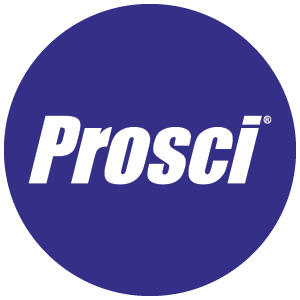
What is a Change Management Risk Assessment?
A change management risk assessment is a strategic process that uncovers looming obstacles to a change initiative. This evaluation is important because both organizations and change initiatives have unique attributes. Failing to account for these risks early can lead to disruptions down the road, impacting organization-wide strategies and even entire teams.
A risk assessment has several objectives, which are detailed below:
· Identifying potential barriers where resistance or challenges might emerge
· Determining the level of effort and resources required to manage change effectively
· Using data to guide tactical decisions
· Promoting sponsor engagement via actionable insights
Broadly speaking, the primary goal of a change management risk assessment is to empower your organization to act, not react. By integrating risk assessment into the early stages of change planning, you gain a clearer understanding of the unique challenges at hand and the tools needed to overcome them.
Benefits of Change Management Risk Assessment
Focusing on data, strategy and alignment enables you to lay the groundwork for smoother implementation and sustained success. Here are the key benefits of conducting a risk assessment:
Benefit #1 – Track change risks and progress based on data
Risk assessments rely on structured data to identify, categorize, and monitor potential obstacles throughout the change process. This tracking is vital for you to measure progress against benchmarks, identify emerging risks early, and make informed decisions to adjust your strategies as needed.
Benefit #2 – Understand the nature of risk
Not all risks are equal in their impact or likelihood. A risk assessment provides clarity by breaking down the unique characteristics of each challenge, helping teams more precisely allocate resources, and appreciate the factors that could influence success.
Benefit #3 – Focus on the right actions to implement
One of the most valuable outcomes of a risk assessment is its ability to prioritize action. Identify high-impact risks so you can direct efforts toward areas that require the most attention. This targeted approach maximizes the impact and efficiency of change management activities.
Benefit #4 – Preempt key risks in implementing change
A proactive approach to risk management allows you to address potential challenges before they materialize. If you preempt risk, you can implement mitigation strategies that minimize disruptions, reduce resistance, and smooth the adoption of change initiatives.
Benefit #5 – Remove barriers to change
Resistance to change is a common challenge that can derail initiatives. Risk assessments uncover specific barriers, whether they stem from culture, leadership gaps, or stakeholder concerns. By identifying and addressing these obstacles, your organization can create an environment that supports and accelerates change.
Benefit #6 – Improve commitment to change
A thorough risk assessment fosters transparency and trust from leadership and stakeholders by clearly communicating risks and their implications. Create a shared understanding that strengthens commitment at all levels to keep everyone aligned and invested in the initiative’s outcomes.

By integrating these benefits into your change management approach, risk assessment becomes a powerful tool for not just managing risks but building momentum and promising long-term success.
Key Steps in Change Management Risk Assessment
A structured risk assessment process is integral to successful change management, offering clarity and focus as you navigate potential challenges. The Prosci Methodology enables you to evaluate, rank, and address risks while aligning with overarching change strategies. Here’s how to navigate this challenge:
Step 1. Assess change characteristics
Every change initiative is unique, and the first step is to evaluate its specific characteristics:
- How extensive is the change?
- What is the number of individuals or groups it will affect?
- Are there elements that may increase complexity?
Step 2. Evaluate organizational attributes
Your organizations brings its own dynamics to the table, including unique values, adaptability and overall openness to change, which can significantly influence how change is received. You also need to consider past change initiatives and any successes, failures, and lingering effects that could impact your efforts.
Step 3. Rank risks
Not all risks demand the same level of attention. Once potential risks are identified, rank them by:
- Impact: How critical is this risk to the success of the change?
- · Influence: What is your capacity to mitigate or control this risk?
Step 4. Analyze and mitigate risks
You need to understand how each risk could affect the change initiative if left unaddressed and then identify specific actions or plans to minimize the impact of each risk.
Step 5. Consult and collaborate
Engage stakeholders and consider seeking support from experienced change practitioners or consultants to strengthen your approach and address any gaps.

Common Challenges to Conducting Risk Assessment
A risk assessment is a necessary part of successful change management, but there are several challenges can hinder its effectiveness. Understanding the obstacles below can help you identify and avoid them:
Absence of change control measures – Without a structured framework, it’s difficult to track and address potential issues effectively.
Securing stakeholder commitment – Leadership’s active engagement and support are essential for creating a shared sense of responsibility and ensuring that risk mitigation strategies are prioritized.
Limited expertise in identifying risks – Collaborating with experienced practitioners or leveraging the Prosci Methodology can help teams that lack the expertise to recognize potential challenges.
Lack of an effective change management process – An ineffective or underdeveloped change management process often results in ad hoc or reactive approaches to risk. A robust process includes proactively pursuing a risk assessment early on in a change initiative.
Extended change implementation timelines – Underestimating the time required for thorough assessment and planning can exacerbate risks by reducing stakeholder confidence. Adopting an agile approach maintains momentum and prevents disruptions.
Gaps in communication – Without consistent communication, teams may operate in silos, missing critical opportunities to identify and mitigate risks collaboratively.
Importance of Aligning Change Initiatives to Organizational Needs
Strategic alignment is a process that relies on cross-functional collaboration to help you make a successful change. It bridges leadership’s objectives and the day-to-day operations of teams, fostering a unified direction that drives decision-making. The idea is simple: when everyone within your organization understands and commits to common goals, change initiatives are more cohesive, removing conflicting priorities or disjointed efforts from the picture.
Senior leaders play a key role here, providing the advocacy, resources, and consistent support needed to sustain focus on strategic goals. This commitment inspires ownership and creates a culture where change becomes an opportunity rather than an obstacle.
Aligning change initiatives with your organizational needs helps you break down silos, foster collaboration, and extract meaningful, measurable success from your efforts. Strategic alignment isn’t just about efficiency; it’s about creating a clear path for impactful, sustainable change.
Tips for Conducting Successful Risk Assessment in Change Management
A well-executed risk assessment is key to identifying challenges and preparing effective mitigation strategies. By following these tips, you can streamline the process and ensure better outcomes for your change initiatives.
Tip 1: Develop a structured and adaptable process
Establish a clear framework for conducting risk assessments while allowing flexibility to adapt to the unique needs of each change initiative.
Tip 2: Prepare necessary data for accuracy
Gather comprehensive information about the size, scope, and complexity of the change.
Tip 3: Focus on change characteristics
Pay attention to high-risk factors like complexity and the number of individuals impacted to help shape the overall risk profile and guide resource allocation.
Tip 4: Prioritize high-impact risks
Rank risks based on their potential impact and your ability to address them, focusing on the top 3 to 5 for the greatest effect.
Tip 5: Engage stakeholders
Involve stakeholders early in the process to build commitment and gain valuable insights that you can use to refine risk mitigation strategies.
Tip 6: Develop and implement mitigation strategies
For each high-risk factor, identify and implement actions to minimize its potential impact and integrate them into your change management plan.
Tip 7: Communicate clearly and consistently
Maintain open communication with stakeholders throughout the process, providing regular updates on risk status and mitigation efforts.
Tip 8: Seek guidance if needed
For particularly high-risk initiatives or if you’re new to change management, collaborating with experienced colleagues or external consultants might strengthen your approach and address gaps.
Strengthen Your Approach to Change
Risk assessment is the cornerstone of confident, effective change management. We tend to run from risk, but changing your thinking to identify and prioritize challenges early on equips your organization to embrace change with resilience and agility—and grow stronger in the process.





